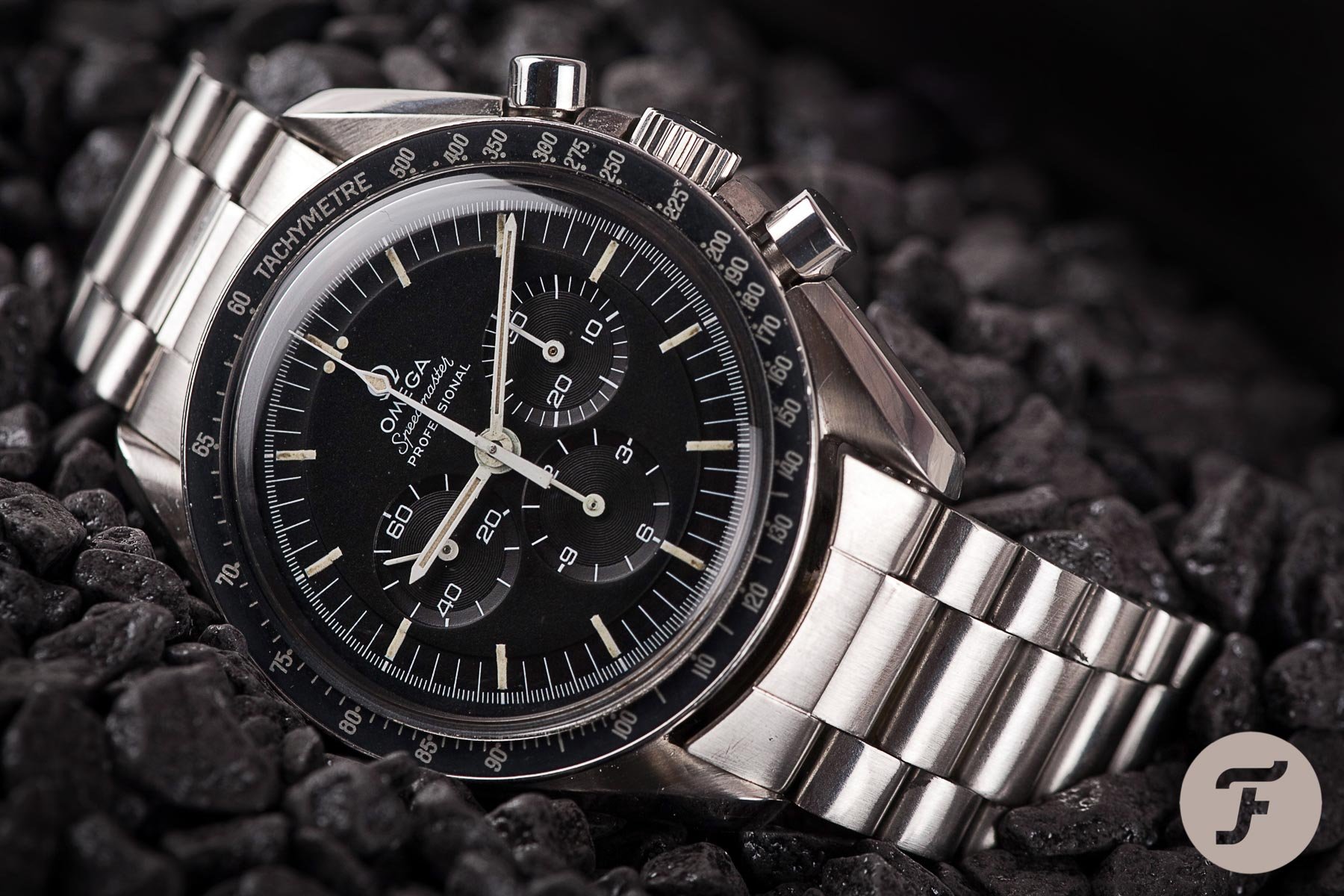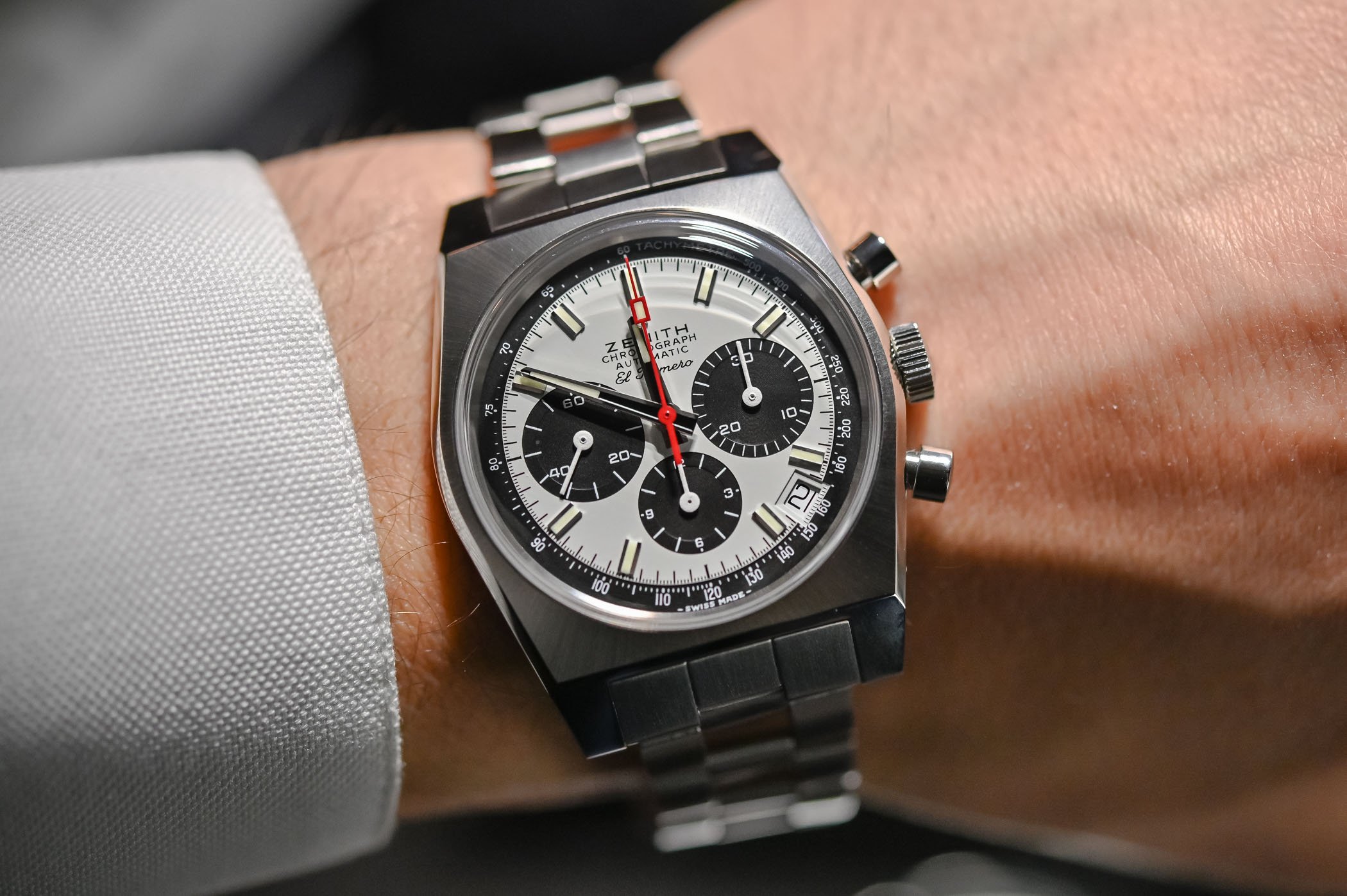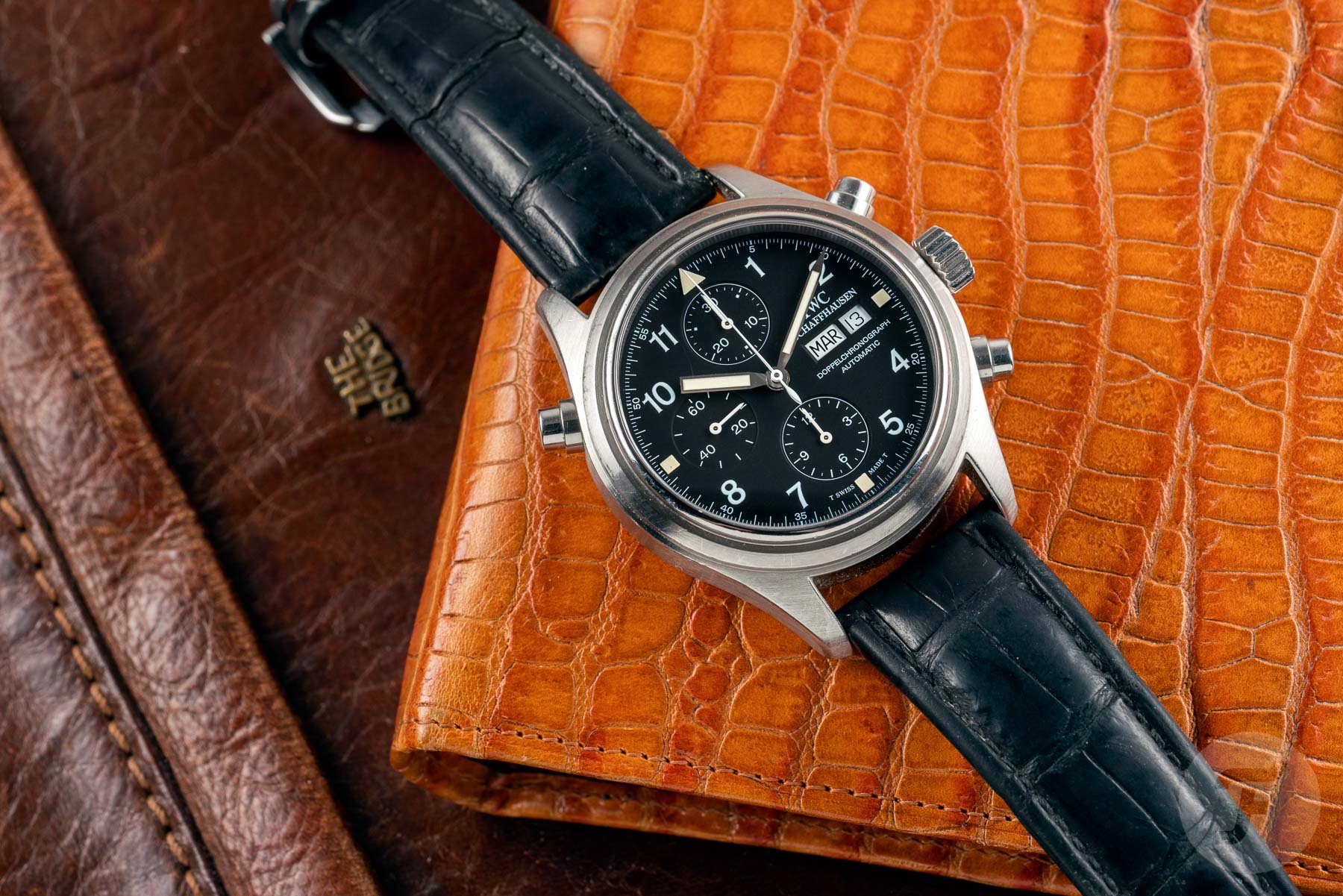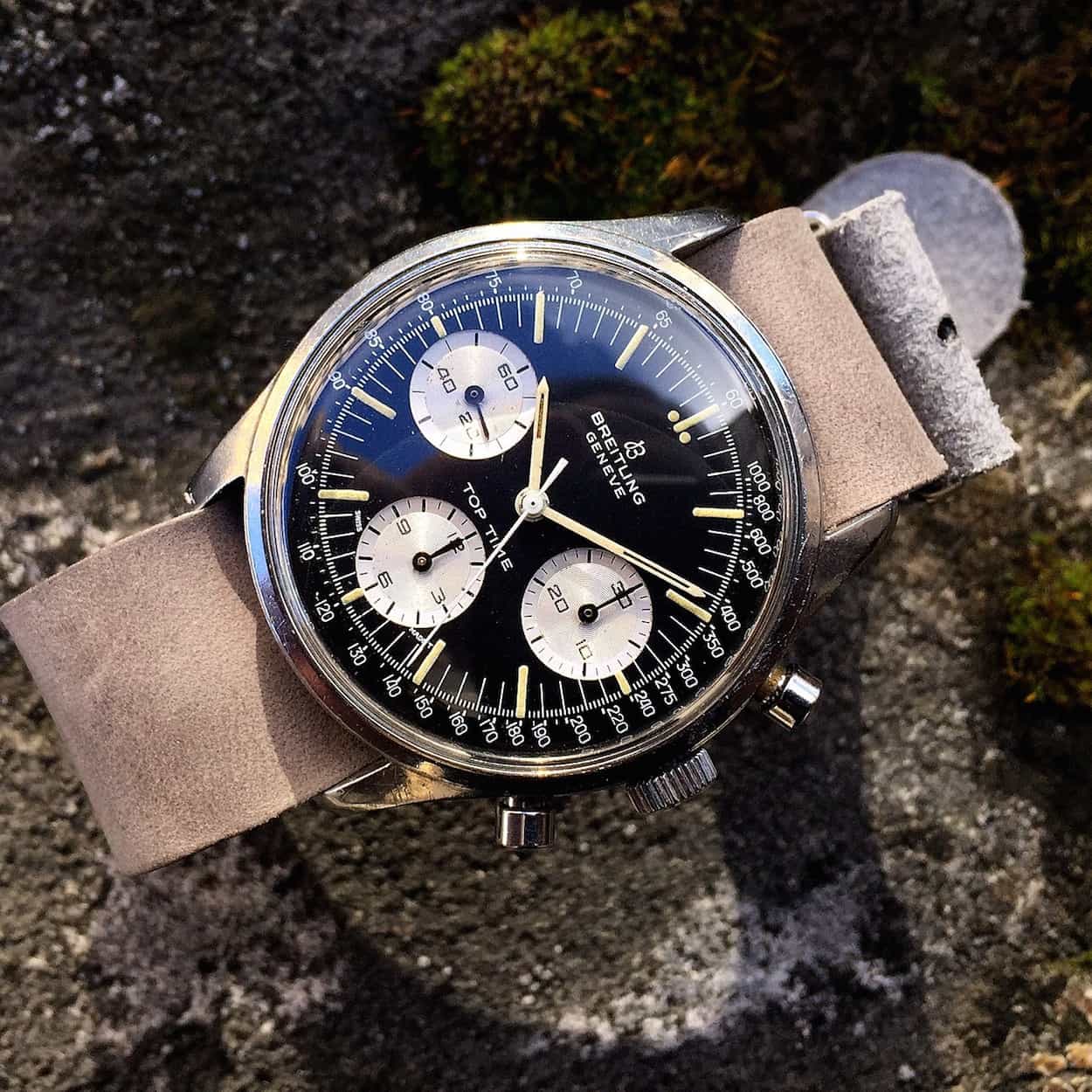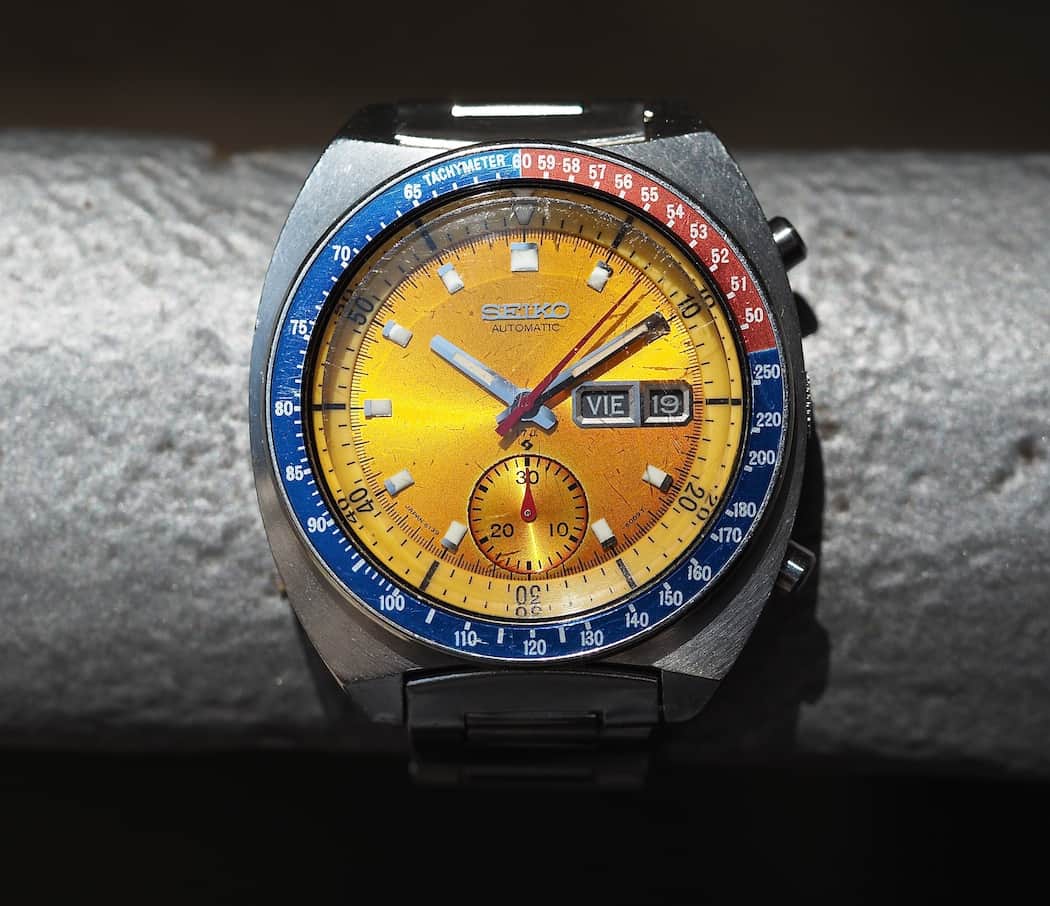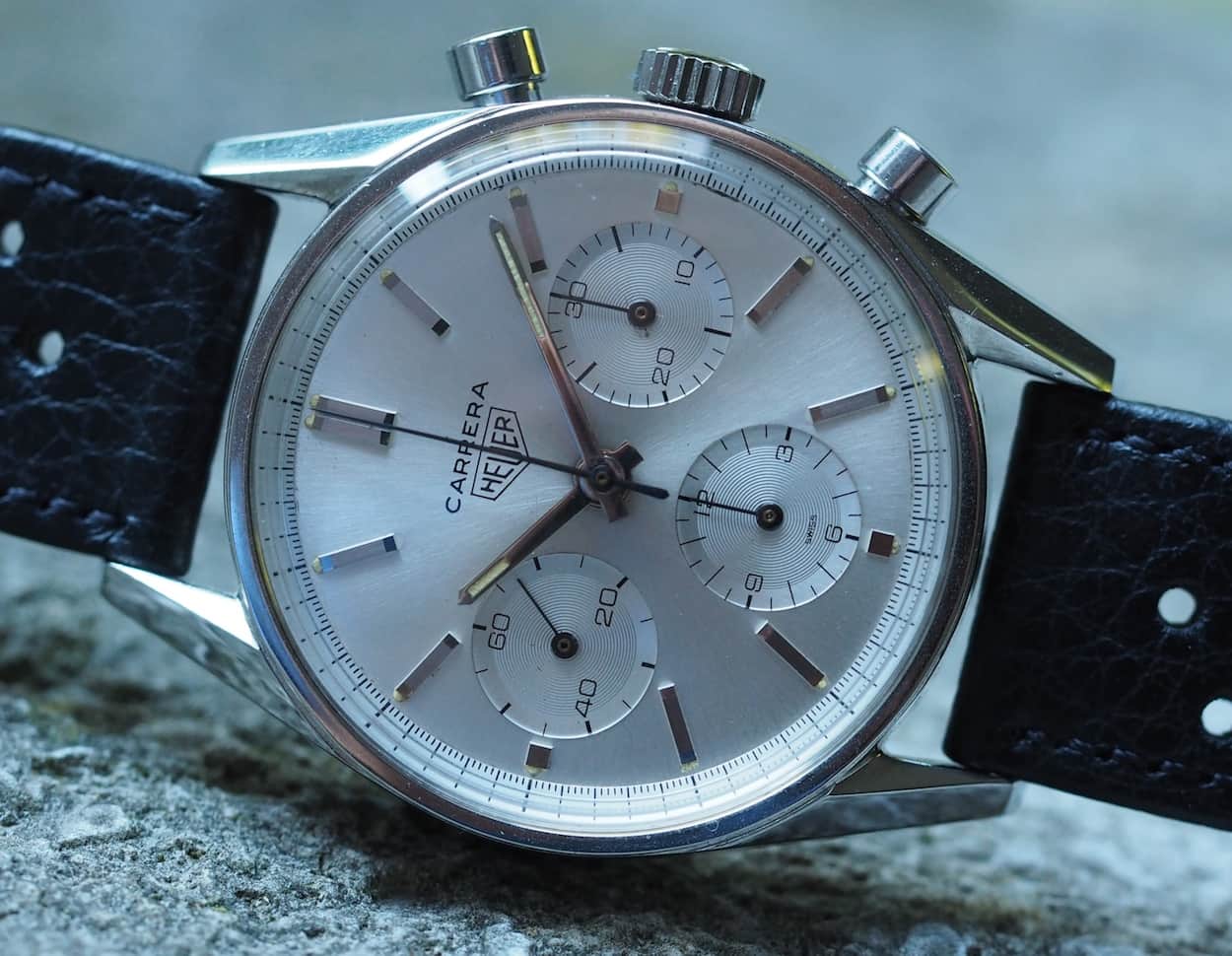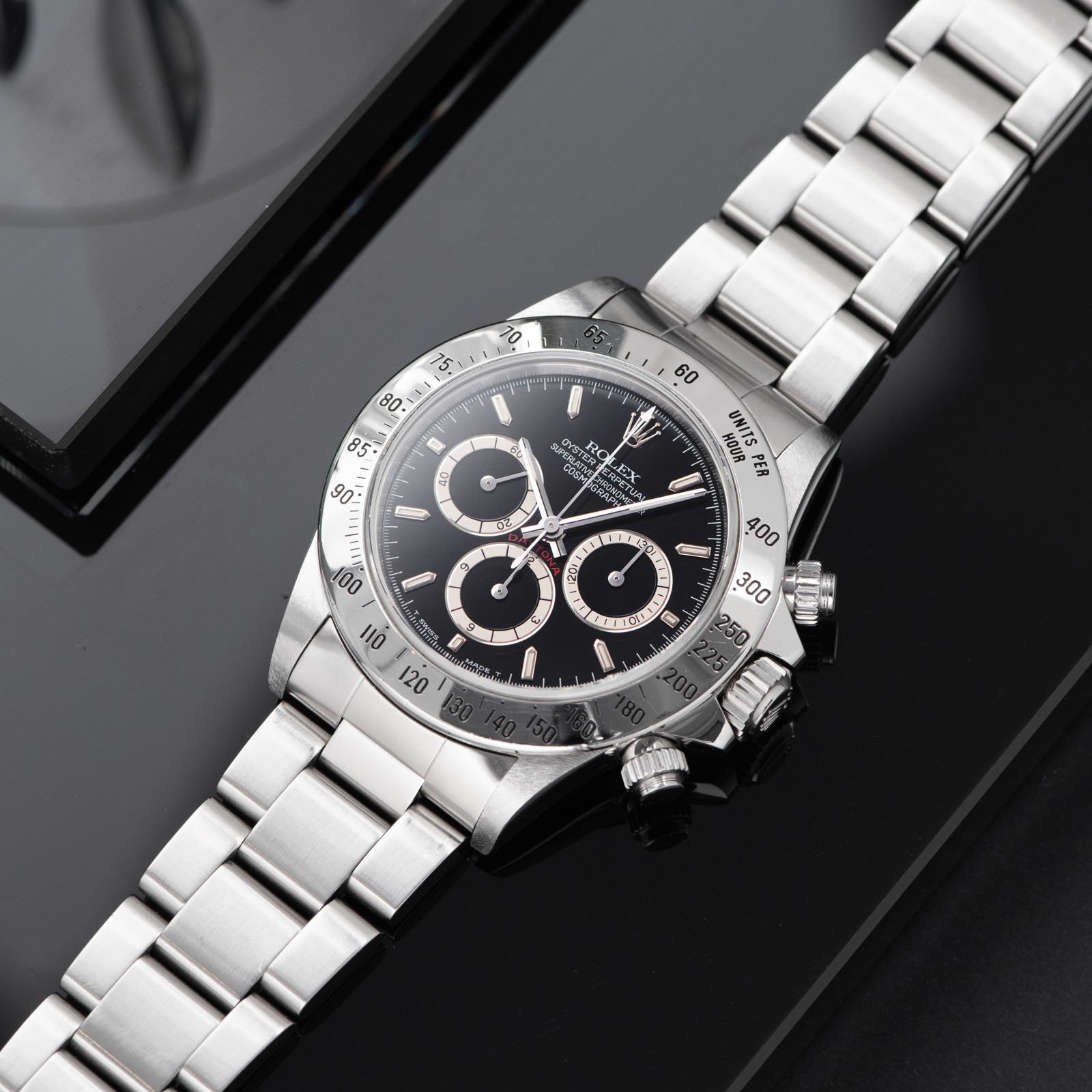You Need At Least One Of These Iconic Chronographs In Your Collection — From Omega To Seiko, Breitling, IWC, Rolex, And More.
I believe that any great watch collection needs to feature at least one iconic chronograph. Whether you love the classic designs of the 1940s and 1950s or prefer more modern models, you are bound to be spoiled for choice. There is something magical about these watches, as they offer the added fun element of daily interaction. It is the complication that you can use every single day at your convenience, either to time things or by simply letting it run. Add a manual winding movement, and there is no doubt that you will form a strong bond with your watch. Let take a look at some of the best chronographs that are a must-have for any collection.
But let me start by saying I didn’t want to just come up with a list of the most iconic chronographs of all time. The point here is to provide a list of watches that anyone and everyone could add to their collection. That’s why the references I will include in this list, will be those of watches that are actually still relatively affordable and widely available today. So stay tuned, you might just see something you like that could eventually sneak its way into your watch box!
1. Omega Speedmaster Professional 145.022
It only makes sense to start this list with the watch we all love so much at Fratello. Those of us that have a healthy obsession with the Speedmaster have seen the rapid increase in prices of some of the vintage references. The Speedmasters powered by Omega’s workhorse caliber 321, especially the straight-lug references, have shot up in price. And even the 145.012 has become more expensive quite quickly, with prices starting at roughly €9K and even beyond for pieces in better condition. The best Speedmaster Professional to consider is the 145.022 that was the first reference that was powered by the caliber 861. Robert-Jan wrote a great two-part buyer’s guide for the Speedmaster 145.022. In the first part, he explains what makes this a great vintage piece to add to any collection. In the second part, RJ explains in detail how to properly tell the different 145.022 versions apart.
For me, there are multiple reasons that this is the Speedmaster Professional to go for. The first is that it’s still affordable with prices starting at around €4K and ranging up to €10K for one in great condition with box and papers. Secondly, this is the reference that was produced in my year of birth. A Speedmaster 145.022-76 from 1977 is second on my list of Speedmaster purchases as a birth year watch is simply something special. Additionally, NASA astronaut Ron Evans had one with him during the Apollo 17 mission that was very close to the moon. So it’s very much part of the legendary Apollo program. There are so many more reasons why this is such a great addition to any collection but just the fact that it’s a Speedmaster “Moonwatch” should tell you all you need to know.
2. Zenith El Primero A384
Going for a Zenith El Primero to your collection is like adding a piece of chronograph royalty to your collection. To me, the A384 is by far the most interesting of the three watches featuring the El Primero movement introduced by Zenith in 1969. Witnessing the high beat movement in action is an absolute joy. But when buying one of the original trio of El Primero models, expect to pay a lot of money. They are quite rare because of their low production numbers. Adding A384 or A386 in good condition with the Gay Frères bracelet will easily cost €15K–€25K. The A385 is a more budget-friendly option and goes for around €10K. Other affordable options include the El Primero Rainbow Flyback and the El Primero De Luca from the 1990s. But they are a lot more generic and don’t come close to the original charm of the 1969 watches.
I personally prefer the A384 over the A386, but honestly, both are great timepieces. The A384 was my pick in the best Zenith watches from the 1960s. I love it because of the great 37mm tonneau case that serves as the perfect canvas for the panda dial and that glorious red chronograph hand. Add the wonderful ladder bracelet and the El Primero movement, and it’s one of my all-time favorites. The best option, however, is not a vintage version but the modern El Primero A384 Revival that is part of the current Zenith collection. It is the perfect option as it respects every detail of the original and combines it with more modern build quality. And you can pick one up for under €6K. Even if you prefer the A386, a brilliant modern re-issue introduced a couple of weeks ago is the better option.
3. IWC Pilot’s Watch Doppelchronograph ref. 3713
Only a couple of weeks ago, we were reminded of the brilliance of the IWC Pilot’s Watch Doppelchronographs from the 1990s. Friend of Fratello and “resident” watchmaker Paul brought the IWC Pilot’s Watch Doppelchronograph ref. 3713 to the office, and Lex, Robert-Jan, and I agreed this was a golden time for IWC’s Pilot’s Watch collection. Lex wrote a great in-depth piece about the watch in which he explained what makes the ref. 3713 and its predecessor, the ref. 3711 is still so relevant. I personally love that the early Pilot’s Watch Doppelchronograph models combine innovation, functionality, and great looks. As Lex explained, the aptly named Doppelchronograph is the first-ever double chronograph that used cams for both the split-second and the chronograph. The movement uses the well-loved Valjoux 7750 as the base. Added is an innovative split-seconds chronograph module designed by Richard Habring.
The Valjoux 7750 at its base makes sure that the watch is reliable, sturdy, and easy to service. Additionally, it is one of the most legible chronographs ever produced. Add a great deal of charm, and this is basically the full package. The ref. 3711 is also an option, of course. That was produced from 1992 until 1996 when it was replaced by this ref. 3713. The ref. 3711 features a domed sapphire crystal compared to the flat sapphire crystal of its successor. Additionally, the watch uses tritium instead of SuperLumiNova — except for some transitional models. The ref. 3713 was in production until 2005. In the last two years, it came only with the Spitfire-dial. Forget about those and focus on the original version. Both the ref. 3711 and the ref. 3713 are available for around €6,000. This will buy you the best chronographs from that era.
4. Breitling Top Time ref. 810
The obvious Breitling choice for this list would be the Navitimer, of course. While I greatly appreciate the Navitimer, it would not actually be my first vintage Breitling pick. It would actually be the stunning Breitling Top Time ref. 810, released in 1964. It was also my pick in the article about the best Breitling watches from the 1960s. But what the Navitimer ref. 806 and the Top Time ref. 810 from that era share is the legendary hand-wound Venus 178 column-wheel chronograph movement. This movement is well-loved and respected by vintage Breitling collectors. It also powered the Navitimer, the AVI ref. 765 and the Premier ref. 765 amongst many other Breitling models. For me, the Top Time ref. 810 is almost archetypical for how a chronograph should be designed. So this pick is as much about the movement as it is about the design.
Its 38mm size is perfect, and the dial design is one of the best out there to this day. Every element falls into place, there is not too much text, and the reverse panda configuration certainly looks the part. But my favorite detail is the 21mm lug width. On a nice leather strap, it simply looks amazing. As Mike explained in his in-depth article about the Top Time ref. 810, Breitling produced Mark 1 and Mark 2 models of the ref. 810. Breitling introduced the Mark 2 in 1967, featuring a different case that was slightly bigger and flatter. The biggest change, however, was the loss of its characteristic chamfered lugs, and a reduction of its lug width to 19mm. Prices can vary, starting at €4K and ranging up to €5K for pieces in good condition. Not a big price for one of the best-looking chronographs ever produced.
5. Seiko 6139 “Pogue” Chronograph
The most affordable option by far in this list is the Seiko 6139 Chronograph. The most obvious pick is the Seiko 6139 “Pogue” with its yellow dial and blue and red Pepsi bezel. When it comes to the 6139-600x series, I prefer the versions with a blue dial “Cevert”, and silver dial, a bit better. They are less polarizing in their appearance without losing that typical Seiko ’70s charm. But I suggest that you browse all the different 6139 models that Seiko produced over the years. The guys at Vintage Watch Inc. have created a perfect overview of the incredible diversity of 6139 models produced. I love the 6139-6040 “Silver Ghost” that Mike also owns, and the 6139-7080 “Hexagon” with its characteristic case is another great option.
But let’s focus on the “Pogue” for now. It features the typically 1970s, 40mm, c-shaped case used by so many brands. The characteristic case shape houses its incredibly brightly-colored yellow dial, an instant eye-catcher. Inside the case is a piece of watch history with the famous 6139 movement. Seiko introduced the caliber 6139A that was produced from 1969 until 1971. In that year, the brand replaced it with the Caliber 6139B that had a modified switching mechanism and was produced until 1978. As Mike explained in his in-depth article about his 6139 “Pogue”, it has a great wrist presence, wears extremely comfortably, and is relatively lightweight. Prices start at roughly €500-600 and move up to €2,000–€3,000 for one in mint condition, which is quite affordable considering the significance of this model in Seiko’s history.
6. Heuer Carrera 2447S
In general, you can say that any of the many Heuer chronographs from the 1960s and 1970s could make for a great addition to any collection. The Carrera, Autavia, Monaco, Camaro, and my personal favorite, the Bund chronograph, perfectly reflect the brand’s impact on the industry. Picking one for this list is quite difficult as you will always be leaving out another icon. In the end, out of the 30 different varieties that are available of the 2447 reference, I picked the Heuer Carrera 2447S. The Carrera 2447S combines several great elements that make it such a great pick. Let’s start with its looks. Every time I see the silver-white dial of the 2447S, I am amazed by how well the Heuer designers were able to lay out the chronograph elements, leaving plenty of room to breathe on the dial, which looks anything but busy.
Despite its 36mm size, the watch does not wear small, as Mike explained in his in-depth story. The long lugs make it a great fit for a variety of wrist sizes. Another reason why this Heuer is my pick is that the watch is powered by the Valjoux 72 movement. This manual winding column-wheel chronograph movement has legendary status with collectors and is used to power a string of iconic chronographs including the Rolex ref. 6238 pre-Daytona, the Rolex Daytona, and the early Breitling Navitimers. It’s also the movement that Heuer used for its legendary Autavia 2446 and this Carrera 2447. While the Autavia could also be a great addition to this list, prices for one quickly reach the €10K mark. Surprisingly, a Carrera 2447S can still be yours well under €10K, with prices starting at roughly €7K. Considering its almost legendary status, that is still very affordable.
7. Breguet Type XX Aéronavale ref. 3800
Speaking of true watchmaking royalty, I would be remiss if I had left Breguet off this list. The modern Type XX Aéronavale ref. 3800ST was introduced back in 1994 and was modeled after the Type 20 military pilot chronographs that Breguet and five other manufacturers produced for the French Military in the 1950s. But the modern Type XX doesn’t look and feel like a military watch. Sure, it’s visually inspired by its military background, but the execution of the Breguet Type XX makes it look like a proper luxury chronograph. The watch features a 39mm stainless steel case that is characterized by the polished bezel and its coin-edge fluting. The classically styled dial and syringe hands offer a great deal of retro charm and plenty of legibility.
In 1998 Breguet added the Type XX Transatlantique ref. 3820 that added a date window at 6 o’clock. I have to say the clean dial of the ref. 3800 looks a lot better, as the date window on the 3820 is placed inside a subdial and stands out instead of blending in. It’s why I prefer the Type XX ref. 3800. Inside the case, Breguet equipped the watch with the Breguet Calibre 582, based on the Lemania 1350, it incorporates an in-house module for the flyback functionality. Every time I’ve had a Type XX on my wrist, I instantly felt respect for the watch. The brand, the history connected to it, and the wonderful finishing that makes this a great chronograph for any collection. And the best thing is, that you might be able to find one between €5K–€6K. It makes the Type XX ref. 3800 one of the best value options on this list.
8. Rolex Cosmograph Daytona ref. 16520
This list would not be complete without the Rolex Daytona. But I was conflicted because the prices have absolutely skyrocketed to ridiculous levels. Should we then simply ignore it? I personally have a love-hate relationship with this watch. I love the era of the manual-winding Daytonas. They include some of the most iconic models ever created, that have all become expensive beyond belief. The last references produced were the legendary ref. 6263 and ref. 6265 that marked the end of an era. When it comes to modern-day automatic Daytona’s I’m generally left uninterested. There is one exception though and that also happens to be the most affordable Daytona currently available. The Rolex Cosmograph Daytona ref. 1620, also known as the “Zenith Daytona” is my final pick for the list. It was first introduced in 1988 and stayed in production until 2000. Essentially it was a completely new watch.
The first automatic Daytona featured a new bigger 39mm case, an updated design for the bezel and the dial, a new bracelet, and a new movement. Rolex sourced the movements from Zenith and therefore played a big part in the revival of the famous El Primero movement. This is another reason why this Daytona is one of the most iconic Rolex watches from the 1980s. Rolex modified the El Primero movements to fit the brand’s performance standards and re-named them Rolex Caliber 4030. The watch came in both black or white, with an updated sub-dial design. A hint of color came in the form of the red Daytona text placed just above the sub-dial at six o’clock. The prices for the Zenith Daytona start at roughly €22.5K which is undoubtedly a lot of money. But as it’s such a significant reference that it deserves a spot on this list.
Final Thoughts
This is obviously just the tip of the iceberg when it comes to the never-ending list of iconic chronographs. However, I would happily say that you truly can’t go wrong with these eight. They would all make a great addition to any collection. In fact, I would gladly add any of the first four to my own! Hopefully sooner, rather than later.
I would love to hear your picks when it comes to iconic chronographs that anyone and everyone should have in their collection! Have I missed any out that you would have liked to see make the cut? Do you disagree with any of my picks? Please let me know in the comments section below.

